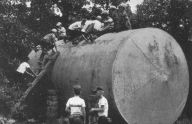Background
From the 1950s on, a series of classic field studies in social psychology seemed to confirm the idea of the banality of evil.
First came Muzafer Sherif’s studies of young boys' behaviour at summer camps. The best known of these was conducted in Robbers Cave, Oklahoma. In this, well-adjusted American boys were divided into groups that were put in competition with each other. Hostility developed rapidly, followed by bitter conflict. Sherif remarked that anyone who came in at this point would have concluded that these youngsters were wicked and vicious. Yet, of course, it was group processes rather than personality that had produced the conflict.
Next, Stanley Milgram conducted his famous obedience studies at Yale University. People volunteered for what they thought was a learning study. When they arrived at the laboratory they were met by an experimenter in a white lab coat. He told them they would be taking part in a learning experiment. As part of this experiment, he then instructed them to administer mounting levels of electric shock to a ‘learner’ each time they made an error (although in fact the ‘learner’ was an accomplice of Milgram and the shocks were not real).
Every single ‘teacher’ was prepared to administer ‘intense shocks’ of 300 volts. Moreover, 65% obeyed all the experimenter’s requests, delivering shocks well beyond a point where they would be lethal. Ordinary Americans, just like ordinary Germans, appeared to have the capacity to kill without provocation.
But perhaps the most dramatic of all the classic studies was Philip Zimbardo’s Stanford Prison Experiment…

